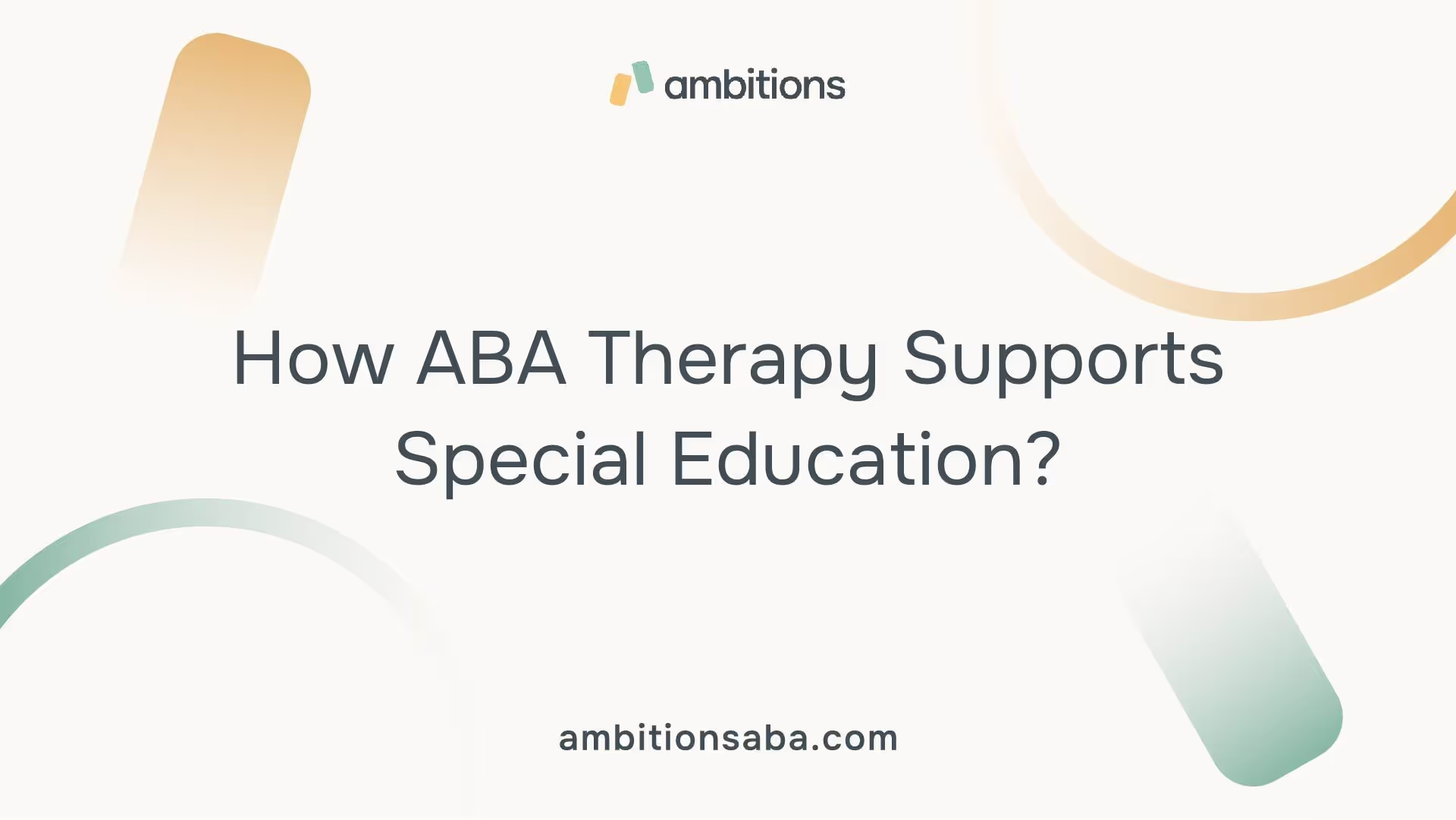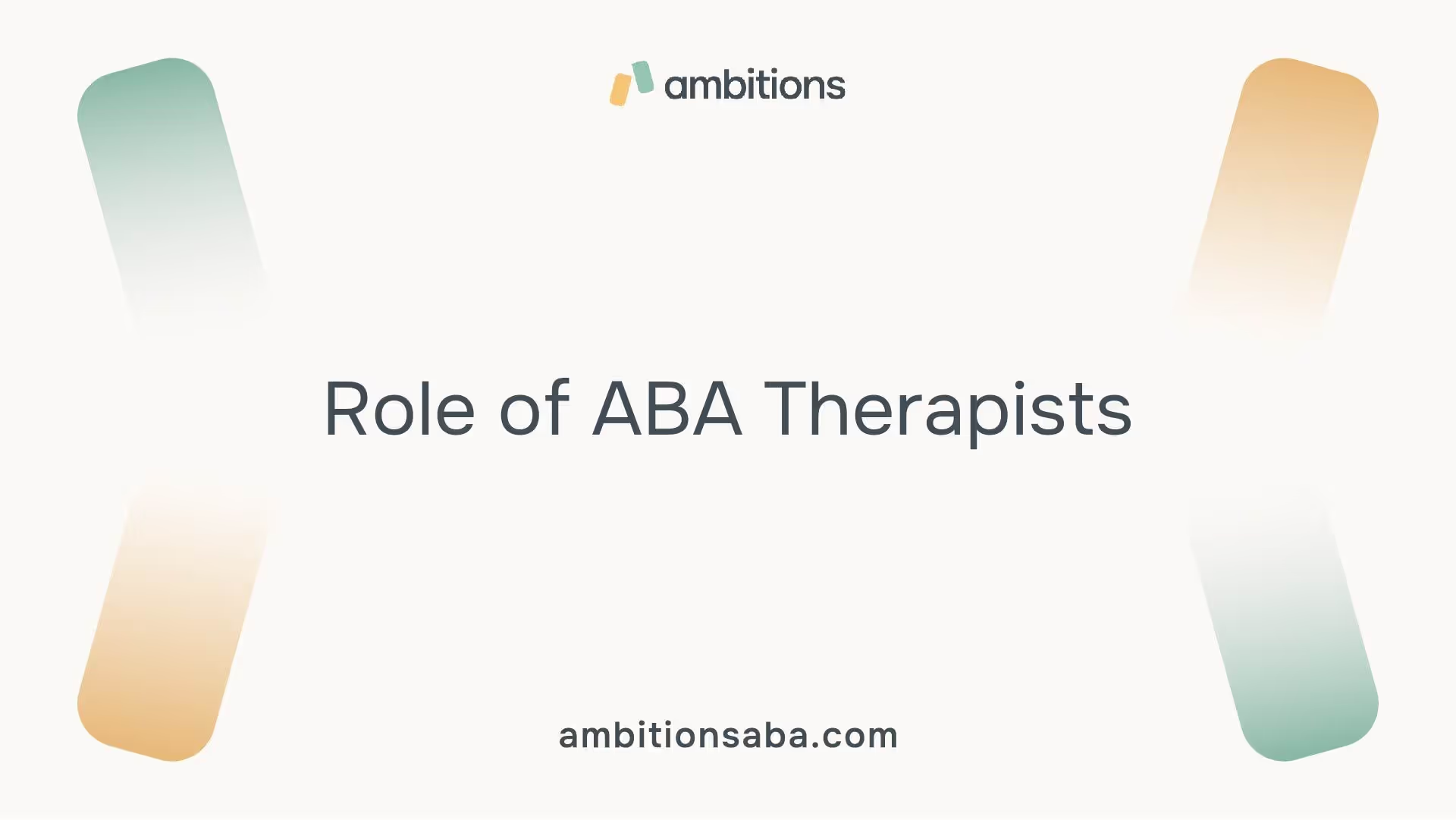Understanding ABA Therapy
Applied Behavior Analysis (ABA) therapy is a valuable approach for supporting children with autism. Established in the 1960s, it has evolved into a recommended treatment, especially for those diagnosed with autism and related developmental disorders. This section discusses the benefits and individualized nature of ABA therapy.

Benefits of ABA Therapy
ABA therapy offers numerous benefits for children with autism. It focuses on enhancing various skills while minimizing challenging behaviors. Key benefits include:
- Improved Communication Skills: ABA helps children learn to communicate effectively, which is essential for social interactions and self-expression.
- Enhanced Learning Capabilities: Through structured activities, children can develop critical academic and daily living skills.
- Increased Independence: ABA fosters self-sufficiency by teaching essential life skills that allow children to navigate their environments more autonomously.
- Behavior Management: It employs positive reinforcement strategies to decrease undesired behaviors, promoting more positive interactions.
According to Autism Speaks, ABA is endorsed as an evidence-based treatment by both the US Surgeon General and the American Psychological Association. It has undergone rigorous scientific evaluation that confirms its efficacy and positive impact on individuals with autism.
Individualized Approach
A fundamental aspect of ABA therapy is its individualized approach. Each therapy program is meticulously tailored to meet the unique needs, interests, and preferences of the child. This customization is crucial in effectively addressing a child's specific challenges and strengths.
The process begins with an assessment by a qualified behavior analyst (BCBA), who creates a personalized plan. Continuous assessment and modification ensure that the intervention remains relevant and effective as the child's skills and needs evolve. This attention to detail helps create an environment where children can thrive and maximize their learning potential, ultimately supporting their overall development.
Role of ABA Therapists

The role of ABA (Applied Behavior Analysis) therapists is crucial in supporting children diagnosed with autism. These professionals are specially trained to tailor therapy programs that meet the specific needs of each child. This section will cover the qualifications and responsibilities of ABA therapists, as well as the importance of customized therapy programs.
Qualifications and Responsibilities
ABA therapists must have appropriate qualifications to provide effective therapy. Most ABA therapists hold certifications such as Board Certified Behavior Analyst (BCBA) or Board Certified Assistant Behavior Analyst (BCaBA). They have extensive training in behavioral analysis and therapy techniques.
- BCBA: A board-certified behavior analyst who designs and supervises ABA programs.
- BCaBA: A board-certified assistant behavior analyst who works under the supervision of a BCBA.
ABA therapists are responsible for:
- Assessing a child's needs and ability level.
- Designing a personalized therapy program focused on essential skill areas such as communication, social skills, self-care, and academic skills [1].
- Continuously monitoring progress and adjusting the program as needed [2].
Customized Therapy Programs
One of the primary responsibilities of ABA therapists is to create customized therapy programs that fit each child's unique skills, needs, interests, and family situations. This individualized approach enables therapists to address specific goals, such as enhancing communication skills or developing social interaction.
ABA therapists utilize various techniques to promote positive behavior and skill development, including:
- Discrete Trial Training (DTT): A structured method that breaks down skills into manageable steps.
- Modeling: Demonstrating desired behaviors for the child to observe and imitate.
- Picture Exchange Communication System (PECS): A visual communication aid for non-verbal children.
- Reinforcement Systems: Methods that reward positive behavior to encourage its repetition.
The tailored approach of ABA therapy makes it essential for addressing the diverse requirements of children with autism. Parents seeking additional support can explore materials in our autism resources for new parents and learn more about supporting mental health in autism.
Techniques in ABA Therapy
ABA therapy employs several effective techniques to help children with autism learn and develop vital skills. Understanding these techniques can empower parents in supporting their child's journey in special education.
Discrete Trial Training (DTT)
Discrete Trial Training (DTT) is a structured method often used in ABA therapy. It breaks down skills into small, manageable parts and teaches these parts individually. Each trial has a clear beginning, middle, and end, making it easier for children to grasp complex concepts.
Key Components of DTT:
- Cue: An instruction or signal prompting the child
- Response: The child’s reaction or answer to the cue
- Reinforcement: Positive feedback or reward for correct responses
DTT is particularly effective in teaching early learning skills, such as counting and identifying colors, which are essential for further learning.
Video Modeling
Video modeling is an engaging technique in which children with autism learn by watching videos that demonstrate specific skills or behaviors. This method is beneficial as it allows children to observe and imitate actions in a controlled environment.
Benefits of Video Modeling:
- Visual Learning: Children can see and hear the behavior being modeled
- Repeated Exposure: Videos can be watched multiple times for better understanding
- Skill Application: Useful for teaching social skills, daily routines, or emotional expressions
By seeing peers model proper behavior, children often feel more confident in practicing those skills themselves [3].
Prompting and Fading
Prompting and fading is a technique utilized in ABA therapy to assist children in learning new skills by offering cues or hints, such as verbal prompts or physical gestures. This gradual process helps encourage independence as the child becomes more familiar with the skill.
How Prompting and Fading Works:
- Prompting: Intentionally assisting the child to complete a task
- Fading: Gradually withdrawing support to promote independent skill use
This method encourages children to develop confidence in their abilities, ultimately leading to increased self-sufficiency.
These techniques play a crucial role in the role of ABA in special education. By employing DTT, video modeling, and prompting and fading, parents can better support their child's growth and development in a way that is tailored to their unique needs. For additional resources, check out autism resources for new parents and supporting mental health in autism.
Effectiveness of ABA Therapy
Understanding the effectiveness of ABA therapy is essential for parents looking to support their children diagnosed with autism. ABA therapy is recognized as an effective approach, rooted in evidence-based practices and strategic techniques, which can lead to significant positive outcomes.
Evidence-Based Practice
ABA therapy is considered an evidence-based best practice treatment, endorsed by the US Surgeon General and the American Psychological Association. This means that it has undergone rigorous scientific evaluation to validate its usefulness and effectiveness in promoting positive changes in behavior [2].
The results of ABA therapy speak for themselves. According to research, over 90% of children receiving ABA treatment show considerable improvements across various skills, including social, communication, and academic abilities, particularly within the autism spectrum disorder and developmental disabilities realms [4].
Here’s a quick look at the benefits reported from effective ABA therapy interventions:
- Social Skills: 90%
- Communication Skills: 90%
- Academic Skills: 90%
Positive Reinforcement
Positive reinforcement is one of the cornerstone strategies used in ABA therapy. This technique encourages behavior change by rewarding desirable actions, making it more likely for an individual to repeat those behaviors in the future. This method not only supports learning but also promotes motivation and self-confidence in children with autism.
For example, when a child successfully uses a communication skill, they may receive verbal praise or a small reward. This builds a positive association with the skill and encourages the child to continue practicing it.
The implications of positive reinforcement in ABA are notable. This approach not only assists in learning new skills but also helps in reducing problem behaviors and improving self-care tasks. The long-term gains from positive reinforcement techniques often extend beyond the treatment period, providing lasting benefits for children with autism.
Parents interested in additional support resources or therapies can explore various options, such as autism resources for new parents or supporting mental health in autism to enhance their child's development further. The role of ABA in special education continues to evolve, proving to be a vital element in the learning and growth of children on the autism spectrum.
ABA in Special Education
Understanding how ABA therapy integrates into special education can provide valuable insights for parents of children diagnosed with autism. The therapeutic approach not only enhances learning but also fosters essential communication skills.
Supporting Learning and Development
ABA therapy significantly benefits individuals with autism spectrum disorders (ASD) in special education settings. It enhances their capacity to observe and imitate others, thereby aiding in the development of vital skills. Studies have demonstrated that children who engage in ABA therapy perform better academically and socially than those who do not receive this intervention [4].
- Academic Skills: Enhanced learning and retention
- Social Skills: Improved interaction with peers
- Communication Skills: Better expressive and receptive skills
ABA therapy aids students in identifying their needs, planning for positive behaviors, and setting personalized goals. This individualized focus helps children learn new skills and meet key developmental milestones.
Impact on Communication Skills
Communication is a pivotal area where ABA therapy shines. The approach is recognized as the "gold standard" for autism treatments due to its effectiveness in teaching social communication and self-care tasks, while also reducing problem behaviors. Long-term benefits often manifest even after the treatment period concludes.
ABA therapy employs various techniques to foster communication development. These include:
- Modeling: Teaching through demonstration.
- Reinforcement: Encouraging positive behavior and communication through rewards.
- Structured Learning: Implementing clear, consistent routines that support skill acquisition.
In special education environments, ABA not only helps children express their needs more clearly but also fosters a sense of independence. This stronger communication foundation allows children to engage with others effectively, paving the way for social integration and learning.
For parents seeking more information, additional resources such as autism resources for new parents and strategies for supporting mental health in autism can offer helpful guidance.
Self-Management Skills in ABA
Self-management skills are an essential aspect of ABA (Applied Behavior Analysis) therapy, especially for children diagnosed with autism. These skills empower individuals to manage their own behaviors, emotions, and actions effectively.
Importance of Self-Management
Developing self-management skills is vital for children with autism as it enhances their ability to understand their behaviors and the consequences that follow. This understanding can lead to improved decision-making, increased self-control, and a greater sense of independence.
Self-management allows children to set personal goals and work towards achieving them, fostering a sense of accomplishment. Setting goals is a critical component of self-management, allowing individuals to focus on making progress one step at a time. ABA techniques for goal-setting involve breaking down larger goals into smaller, manageable steps.
Furthermore, function-based self-management strategies, which are based on the results of a functional behavior assessment (FBA), have shown effectiveness in reducing problem behavior in children with emotional and behavioral disorders. These strategies are tailored to each child's specific needs, enabling them to take control of their behavior and develop self-efficacy and self-regulation.
Strategies and Techniques
To equip children with effective self-management skills, several strategies and techniques can be utilized in their ABA therapy programs. Here are some popular methods:
- Goal Setting: Breaking down goals into smaller, achievable tasks to foster a sense of achievement.
- Self-Monitoring: Teaching children to observe and record their own behaviors, which encourages accountability.
- Visual Supports: Using charts, schedules, or visuals to remind children of their goals and progress.
- Function-Based Strategies: Creating plans based on individual needs, reducing problematic behaviors, and promoting desired behaviors.
- Rewards and Reinforcement: Implementing a system of rewards to motivate children when they meet their self-management goals.
By integrating these strategies into a child's ABA therapy, parents can help their child gain valuable self-management skills. For additional resources on autism, consider visiting our page on autism resources for new parents. Supporting mental health is also critical; explore our article on supporting mental health in autism for further information.
References
[1]: https://www.psychologytoday.com/us/therapy-types/applied-behavior-analysis
[2]: https://www.autismspeaks.org/applied-behavior-analysis
[3]: https://dreambigchildren.com/blog/understanding-aba-techniques-7-strategies-you-need-to-know/
[4]: https://insightstobehavior.com/blog/connection-aba-special-education-guide/
[5]: https://masteraba.com/developing-effective-self-management-skills-in-aba-programs-strategies-and-techniques/



